How to subtract minutes from time in Excel.
Excel provides powerful features for performing calculations involving time, including subtracting minutes from a given time. Whether you need to calculate time differences, track durations, or manage schedules effectively, understanding how to subtract minutes from time in Excel is essential.
Let’s take a look at the Dataset which includes the following columns: Meeting Time, Minute to Subtract. In this tutorial, we will explore different methods to Subtract Minutes From Time, enabling you to streamline calculations and enhance your time management capabilities.
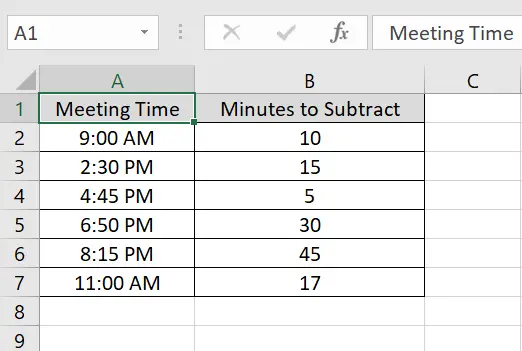
Method – 1 Using Subtract formula
The formula that we are going to use calculates the time difference between two cells, A2 and B2, in minutes. The 1440 part of the formula divides the difference between the two cells by 1440. Since there are 1440 minutes in a day (24 hours * 60 minutes), dividing by 1440 converts the time difference into minutes. This can be useful for various applications, such as calculating durations, tracking elapsed time, or performing time-based calculations in Excel.
Step – 1 Select the cell.
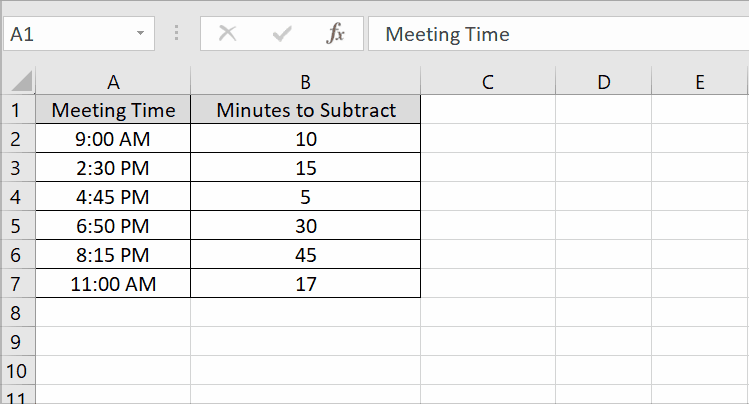
- Select the cell where you want to write the formula.
- The syntax of this formula will be
=First_Cell_Address-Second_Cell_Address/1440
- In our case, the formula will be
=A2-B2/1440
Step – 2 Apply the formula.
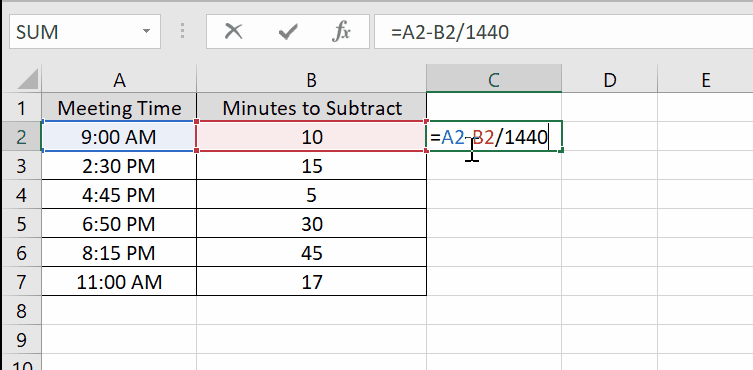
- Press Enter to apply the formula.
- Use the Fill Handle to drag the formula down to apply it to other rows.
Method – 2 Using TIME Function.
The formula we will use calculates a new time value by subtracting a specified number of minutes from a given time value in cell A2. The TIME function is used to create a time value by specifying the hour, minute, and second components. In this formula, the hour component is set to 0 since we are only subtracting minutes. This formula is useful when you need to adjust a given time value by subtracting a specific number of minutes, such as in scheduling scenarios or when tracking time durations.
Step – 1 Select the cell.
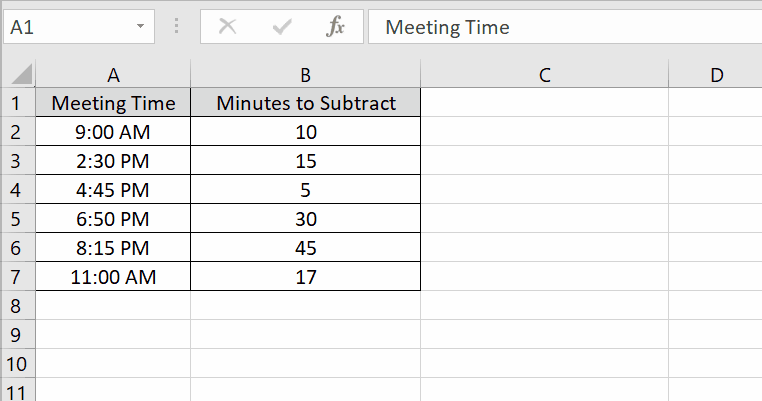
- Select the cell where you want to write the formula.
- The syntax of the formula will be
=First_Cell_Address-TIME(0,Second_Cell_Address,0)
- In our case, the formula will be
=A2-TIME(0,B2,0)
Step – 2 Apply the formula.
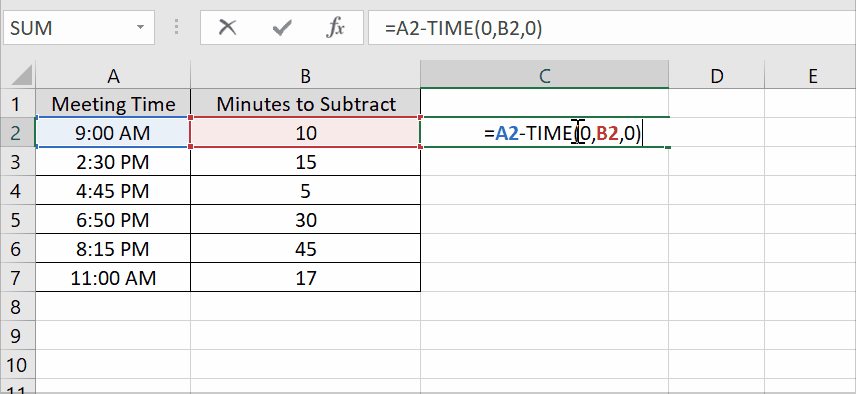
- Press Enter to apply the formula.
- Use the Fill Handle to drag the formula down to apply it to other rows.
Method – 3 Using TIME, HOUR, MINUTE, and SECOND Functions.
The formula we will use calculates a new time value by subtracting a specified number of minutes (B2) from a given time (A2). The HOUR function extracts the hour component from the time in cell A2. The MINUTE function extracts the minute component from the time in cell A2. The SECOND function extracts the second component from the time in cell A2. By combining these functions and operations, the formula calculates a new time value by subtracting the specified number of minutes from the original time. This formula can be helpful when you need to calculate a revised time by subtracting a specific duration from a given time, such as adjusting a schedule or tracking elapsed time.
Step – 1 Select the cell.
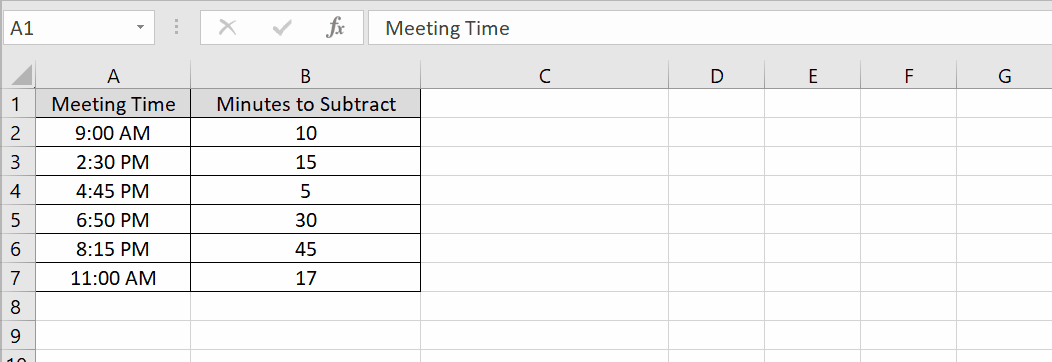
- Select the cell where you want to write the formula.
- The syntax of the formula will be
=TIME(HOUR(First_Cell_Address),MINUTE(First_Cell_Address)- Second_Cell_Address,SECOND(First_Cell_Address))
- In our case, the formula will be
=TIME(HOUR(A2),MINUTE(A2)-B2,SECOND(A2))
Step – 2 Apply the formula.

- Press Enter to apply the formula.
- Use the Fill Handle to drag the formula down to apply it to other rows.
Conclusion:
Subtracting minutes from time in Excel enables efficient time calculations and effective time management. By utilizing functions like TIME and MINUTE, you can easily perform time subtractions, allowing for accurate scheduling and duration tracking. Incorporate these techniques into your Excel workflows to optimize your time-related calculations and enhance your productivity.



